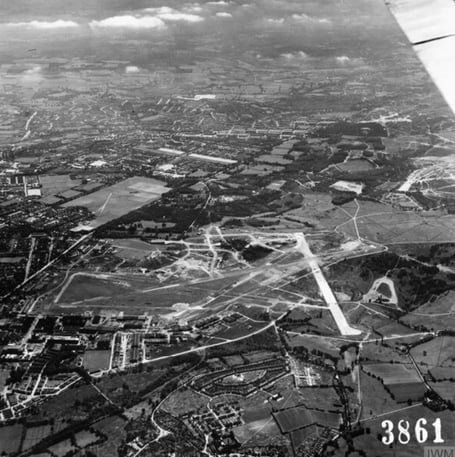In late June, Peeps into the Past explored the tragic death of Alice Emily Chandler during a Luftwaffe raid on Bordon Camp on August 16, 1940. Following this, Arthur Kearse, a reader from Alton, has provided additional context on the events of that fateful day.
Arthur's research, published in the Spring 2024 issue of the Farnborough Air Sciences Trust newsletter, details a German bombing raid on the Royal Aircraft Establishment at Farnborough on the same day as the Bordon attack.
It is possible this was the same formation that dropped the bomb that killed poor Alice Chandler. Although, as Arthur explains, the Luftwaffe tactics of the time make it hard to establish this as fact.
Arthur writes: “According to the RAF Air Historical Branch, a large German formation had crossed the coast somewhere around the Solent on the 16th of August 1940 and then split up into groups of eight or nine aircraft.
“The weather was broken cloud with cloudbase at 4,500 feet which meant Fighter Command had difficulty in locating and attacking the around 200 Luftwaffe bombers in small formations ranging over Southern England that day.
“British and German accounts of the day are rather fragmentary. It's likely that it was one of these groups that attacked Bordon garrison, another one attacked Basingstoke (at least) and then Farnborough.”
Arthur’s research also sadly reveals some 166 civilian deaths were recorded that day - correcting the claim by Peeps that Alice Chandler was the only civilian to be killed in air raids on the 16th.
Of these casualties were ten civilians in Basingstoke and three members of the Home Guard at Farnborough, as confirmed by the excellent Commonwealth War Graves Commission (CWGC) website.
The CWGC does though confirm Alice was the only civilian casualty of the entire Second World War buried in Alton district. It also confirms she was aged 57 at the time of her death on August 16, 1944, and lived in the Detached Quarters, Fire Station, Bordon with her husband Thomas Richard Chandler, which is where she died.
Meanwhile, three ‘civilian war dead’ are buried in Farnham urban district.
Arthur Charles Porter was aged 51 when he was killed on August 21, 1940, while two 11-year-olds tragically also lost their lives; Peter Alan Darwell Sidey on December 5, 1943, and Peter Arthur Stubbles on August 2, 1944.
Mr Porter featured in the Herald as recently as 2014 after Farnham Town Council restored his grave in West Street cemetery. It was recorded then that he had suffered injuries at Longmoor Military Camp near Greatham on August 16, 1940, and later died at a house on Hale Road leaving his wife, Nellie Porter.
His death is listed as being caused by “enemy action”, so perhaps a bombing or strafing attack, and burial records held by Farnham Town Council show he was a lorry driver.
Less is known about the sad demise of the two 11-year-olds, however. Can Peeps readers shed light on how this unfortunate duo came to be recorded among Farnham’s civilian war dead? If you have any information, please email [email protected]
You might think it fortunate that so few civilians were killed by enemy actions locally, but Arthur argues it would have been even fewer had the German tactics been more coherent.
He continued: “The Luftwaffe attacks on places like Farnborough or Bordon during the Battle of Britain were strategically inept as what they were really after was Fighter Command and the Command and Control System. This lack of focus is reflected in attacks elsewhere in August, on Bomber Command bases for example.
“Dowding's strategy was to wear the Germans down - particularly by picking off the bombers in the summer of 1940, knowing that autumn/winter would stall proceedings and the chance of invasion.
“Luckily for us the Germans were no match for Dowding's preparations and insight, the leadership of Sector Commanders, especially Keith Park and the courage and endurance of Fighter Command personnel.”





Comments
This article has no comments yet. Be the first to leave a comment.